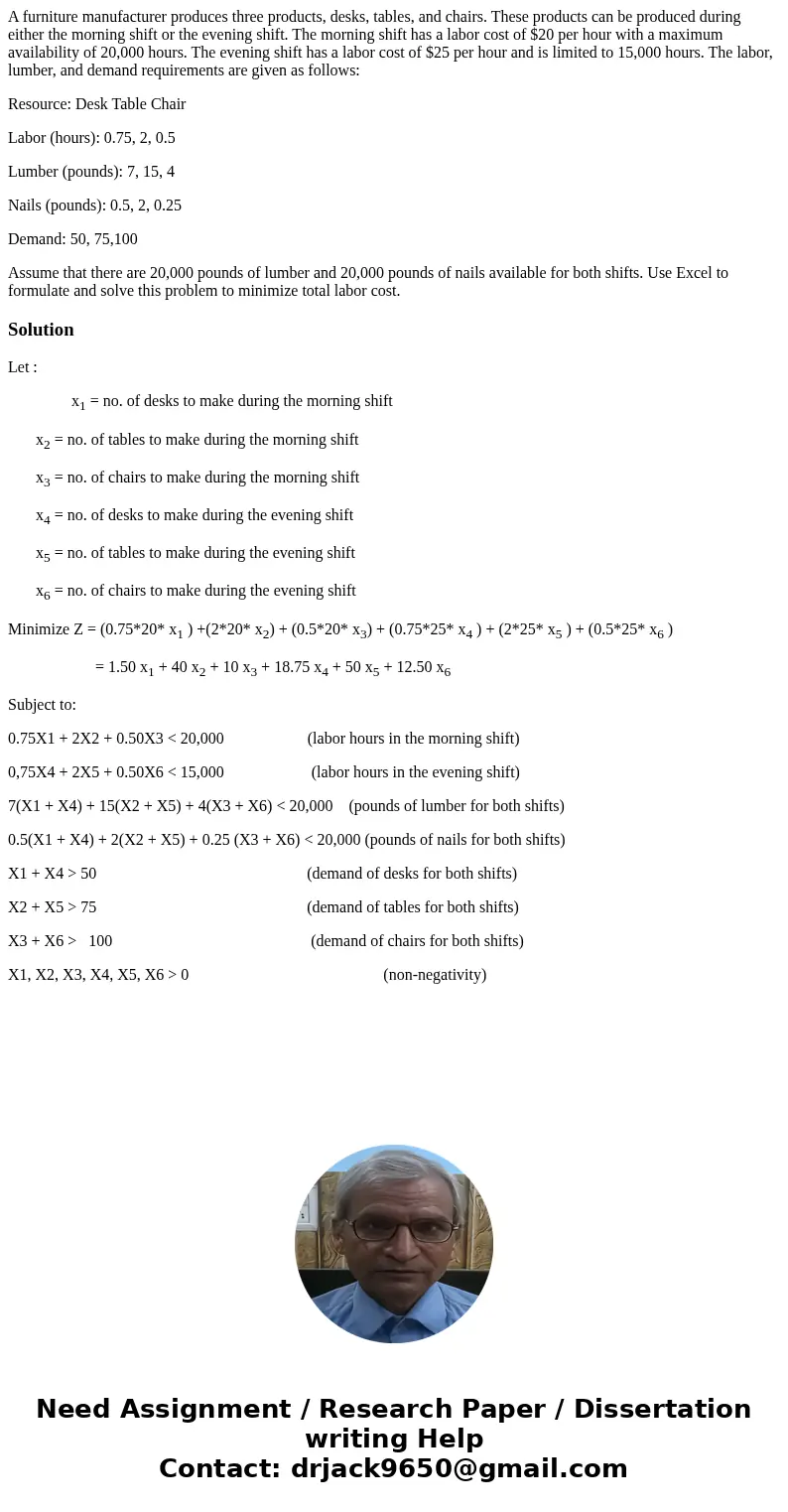A furniture manufacturer produces three products desks table
A furniture manufacturer produces three products, desks, tables, and chairs. These products can be produced during either the morning shift or the evening shift. The morning shift has a labor cost of $20 per hour with a maximum availability of 20,000 hours. The evening shift has a labor cost of $25 per hour and is limited to 15,000 hours. The labor, lumber, and demand requirements are given as follows:
Resource: Desk Table Chair
Labor (hours): 0.75, 2, 0.5
Lumber (pounds): 7, 15, 4
Nails (pounds): 0.5, 2, 0.25
Demand: 50, 75,100
Assume that there are 20,000 pounds of lumber and 20,000 pounds of nails available for both shifts. Use Excel to formulate and solve this problem to minimize total labor cost.
Solution
Let :
x1 = no. of desks to make during the morning shift
x2 = no. of tables to make during the morning shift
x3 = no. of chairs to make during the morning shift
x4 = no. of desks to make during the evening shift
x5 = no. of tables to make during the evening shift
x6 = no. of chairs to make during the evening shift
Minimize Z = (0.75*20* x1 ) +(2*20* x2) + (0.5*20* x3) + (0.75*25* x4 ) + (2*25* x5 ) + (0.5*25* x6 )
= 1.50 x1 + 40 x2 + 10 x3 + 18.75 x4 + 50 x5 + 12.50 x6
Subject to:
0.75X1 + 2X2 + 0.50X3 < 20,000 (labor hours in the morning shift)
0,75X4 + 2X5 + 0.50X6 < 15,000 (labor hours in the evening shift)
7(X1 + X4) + 15(X2 + X5) + 4(X3 + X6) < 20,000 (pounds of lumber for both shifts)
0.5(X1 + X4) + 2(X2 + X5) + 0.25 (X3 + X6) < 20,000 (pounds of nails for both shifts)
X1 + X4 > 50 (demand of desks for both shifts)
X2 + X5 > 75 (demand of tables for both shifts)
X3 + X6 > 100 (demand of chairs for both shifts)
X1, X2, X3, X4, X5, X6 > 0 (non-negativity)

 Homework Sourse
Homework Sourse